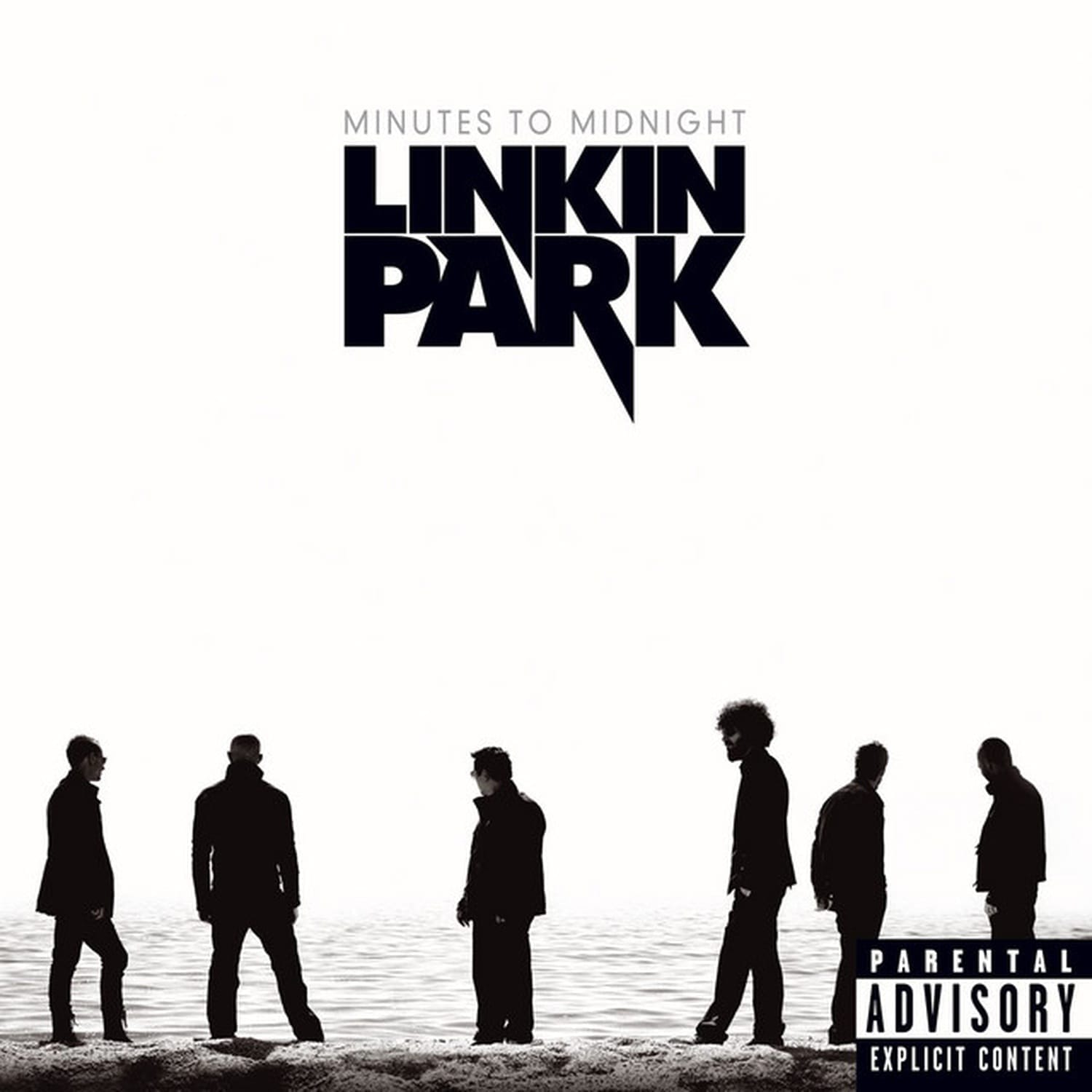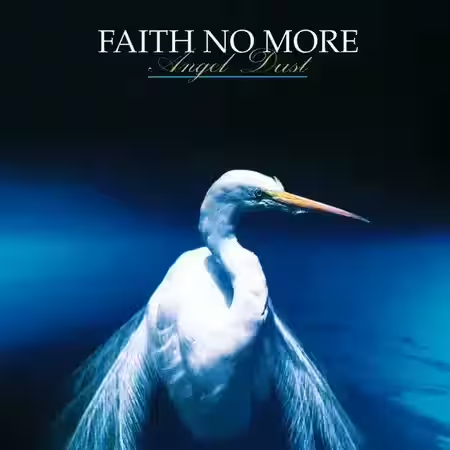
Introduction
In the ever-evolving landscape of rock music, few albums have made as significant an impact as Linkin Park’s “Minutes to Midnight.” Released on May 14, 2007, this album marked a pivotal moment in the band’s career, showcasing a dramatic shift in their musical style and lyrical depth. As their third studio album, “Minutes to Midnight” saw Linkin Park transition from their nu-metal roots to a more diverse sound that incorporated elements of alternative rock, hard rock, and alternative metal. This bold move not only expanded their musical horizons but also solidified their place in the history of modern rock.
This article delves into the creation, recording process, commercial performance, and lasting legacy of “Minutes to Midnight.” We’ll explore the album’s genesis, the meticulous recording sessions, its reception by critics and fans alike, and its enduring influence on the music industry. Additionally, we’ll analyze each track, uncover the stories behind the singles, and examine the broader cultural context of the album’s release.
| Attribute | Details |
|---|---|
| Release date | May 14, 2007 |
| Album title | Minutes to Midnight |
| Genre | Alternative rock, Alternative metal, Hard rock |
| Total runtime | 43:23 |
| Number of tracks | 12 |
| Record label | Warner Bros., Machine Shop |
| Recording studio | The Mansion, Laurel Canyon, Los Angeles; NRG Recordings, North Hollywood, Los Angeles |
| Producer(s) | Rick Rubin, Mike Shinoda |
The impact of “Minutes to Midnight” extends beyond its commercial success, with the album debuting at number one on the Billboard 200 and in 15 other countries. It represented the largest first-week sales of 2007 in the United States, selling over 623,000 copies. Its influence can be felt in the way it redefined the sound of a band at the height of their popularity, challenging them to explore new musical territories. As Chester Bennington once remarked, “This album is a mix of punk, classic rock, and hip-hop standards,” a testament to the band’s willingness to push boundaries and defy expectations.
For those interested in exploring more about Linkin Park’s musical journey, check out our Linkin Park – Hybrid Theory podcast.
The Genesis of “Minutes to Midnight”
The creation of “Minutes to Midnight” was born out of a desire to evolve beyond the confines of the nu-metal genre that had initially defined Linkin Park’s sound. As the band prepared to embark on this new creative journey, the music landscape was in flux, with rock music branching out into diverse subgenres. The early 2000s saw a resurgence of alternative rock, with bands like Queens of the Stone Age and The White Stripes gaining prominence. Against this backdrop, Linkin Park sought to redefine themselves, drawing inspiration from a broader range of musical influences.
Linkin Park’s previous works, “Hybrid Theory” and “Meteora,” had established them as pioneers of the nu-metal movement, characterized by a blend of rock, hip-hop, and electronic elements. However, by 2007, the band felt it was time to move away from this sound. According to Mike Shinoda, “We were looking back at the things that we had done in the past… and I think we just figured that we had exhausted that sound.” This introspection led to the conceptualization of “Minutes to Midnight,” an album that would mark a departure from their earlier style.
The album’s creative process was a collaborative effort, with all six band members contributing to its development. Mike Shinoda and Rick Rubin took on the role of producers, guiding the band through the recording sessions at The Mansion and NRG Recordings. The title “Minutes to Midnight” was inspired by the Doomsday Clock, symbolizing the urgency and intensity of the album’s themes. The album artwork, designed by the band in collaboration with Frank Maddocks, captured the essence of this new era for Linkin Park.
Below is a table listing the band members and their respective roles during the production of “Minutes to Midnight”:
| Band Member | Role |
|---|---|
| Chester Bennington | Lead vocals, rhythm guitar |
| Rob Bourdon | Drums, percussion |
| Brad Delson | Lead guitar, backing vocals |
| Dave “Phoenix” Farrell | Bass guitar, backing vocals |
| Joe Hahn | Turntables, sampling, programming |
| Mike Shinoda | Rhythm guitar, keyboard, piano, production |
The recording costs for “Minutes to Midnight” were financed by Warner Bros. Records and Machine Shop, with a substantial budget allocated to ensure the album’s high production quality. Despite the financial backing, the band faced challenges in aligning their creative vision with the expectations of their label and fanbase. Nevertheless, their determination to evolve artistically resulted in an album that would leave a lasting mark on the music industry.
Recording Process
The recording of “Minutes to Midnight” was a meticulous process, spanning over 14 months from January 2006 to March 2007. The sessions took place at two renowned studios: The Mansion in Laurel Canyon and NRG Recordings in North Hollywood. The Mansion, owned by producer Rick Rubin, is famed for its storied history and has hosted numerous legendary artists. Its serene yet haunting ambiance provided the perfect backdrop for the introspective and experimental nature of the album.
Under the guidance of Rick Rubin and Mike Shinoda, the band embraced a more organic approach to recording. Rubin’s production style, characterized by its minimalist approach and emphasis on raw emotion, complemented Shinoda’s technical expertise. Together, they created an environment that encouraged experimentation and pushed the band to explore new sonic territories. Key personnel included recording engineers Dana Nielsen, Andrew Scheps, and Ethan Mates, who played crucial roles in capturing the album’s dynamic sound.
The studios were equipped with state-of-the-art hardware, providing the band with the tools needed to craft their new sound. While the exact equipment used remains largely undocumented, assumptions can be made based on the known capabilities of the studios at the time. The table below outlines some of the likely hardware and techniques employed during the recording sessions:
| Equipment | Details |
|---|---|
| Microphones | Neumann U87, Shure SM57 |
| Consoles | Neve 8068 (Studio A), Neve 8078 (Studio B) |
| Monitors | Yamaha NS-10, Oceanway Audio HR3.5 |
| Guitars | Fender Stratocaster, Gibson Les Paul |
| Amplifiers | Marshall JCM800, Mesa Boogie Dual Rectifier |
Despite the challenges and delays, the recording sessions were marked by a sense of creative freedom. The band experimented with various musical styles, incorporating elements of punk, classic rock, and hip-hop. As Chester Bennington described, “Rick has brought more of a stripped-down, classic-rock and hip-hop kind of feel.” This approach resulted in a diverse and dynamic album that defied genre conventions.
Rick Rubin and Mike Shinoda have both been prolific producers, each with an extensive discography. Below is a table listing some of the notable albums produced by them:
| Producer | Artist | Album | Year |
|---|---|---|---|
| Rick Rubin | Red Hot Chili Peppers | Blood Sugar Sex Magik | 1991 |
| Rick Rubin | Johnny Cash | American IV: The Man Comes Around | 2002 |
| Mike Shinoda | Fort Minor | The Rising Tied | 2005 |
| Mike Shinoda | Linkin Park | A Thousand Suns | 2010 |
Commercial Performance and Reception
Upon its release, “Minutes to Midnight” was met with significant commercial success, reflecting Linkin Park’s enduring popularity and the anticipation surrounding their new musical direction. The album debuted at number one on the US Billboard 200 chart, selling over 623,000 copies in its first week, the highest first-week sales of 2007 at that time. This commercial triumph was mirrored globally, with the album reaching the top spot in 15 countries, including the UK and Canada.
The table below presents a comprehensive overview of Linkin Park’s album sales, highlighting the commercial performance of “Minutes to Midnight” in comparison to their other releases:
| Album Title | Sales | Year Released |
|---|---|---|
| HYBRID THEORY | 27,000,000 | 2000 |
| METEORA | 11,292,487 | 2003 |
| MINUTES TO MIDNIGHT | 7,815,000 | 2007 |
| COLLISION COURSE | 3,170,324 | 2004 |
| LIVE IN TEXAS | 2,309,828 | 2003 |
“Minutes to Midnight” also garnered several awards and certifications, underscoring its impact on the music industry. It achieved multi-platinum status in the United States, with certifications in numerous countries worldwide, including 3x Platinum in Australia and 2x Platinum in the United Kingdom. The album’s success was further cemented by its inclusion in Billboard’s Hot 200 Albums of the Decade, where it ranked at number 154.
Released amidst a competitive landscape, “Minutes to Midnight” stood out against other significant albums of 2007. While it received mixed reviews from critics, with some praising its bold departure from the band’s previous sound and others critiquing its lack of cohesion, the album’s commercial success spoke volumes about its resonance with fans. Other albums released in 2007 include:
- Echoes, Silence, Patience & Grace by Foo Fighters [Physical Sales: 1,500,000]
- Infinity on High by Fall Out Boy [Physical Sales: 2,000,000]
- Blackout by Britney Spears [Physical Sales: 1,000,000]
The album received several accolades, including a nomination for Best International Album at the 2008 Juno Awards and the MTV Europe Music Award for Best Rock. Its singles, particularly “What I’ve Done” and “Bleed It Out,” also achieved considerable success, contributing to the album’s enduring legacy.
Singles and Track Analysis
The release of “Minutes to Midnight” was accompanied by a series of singles that showcased the album’s diverse sound and thematic depth. Each single offered a glimpse into the band’s evolving musical identity, with varying degrees of commercial success and critical acclaim. The lead single, “What I’ve Done,” released on April 2, 2007, set the tone for the album with its introspective lyrics and powerful instrumentation. It was followed by “Bleed It Out,” “Shadow of the Day,” “Given Up,” and “Leave Out All the Rest,” each contributing to the album’s narrative arc.
The table below provides a detailed list of the album’s tracks, along with their lengths and writing credits:
| Track Name | Length | Writing Credit |
|---|---|---|
| Wake | 1:40 | Linkin Park |
| Given Up* | 3:09 | Linkin Park |
| Leave Out All The Rest* | 3:29 | Linkin Park |
| Bleed It Out* | 2:44 | Linkin Park |
| Shadow of the Day* | 4:50 | Linkin Park |
| What I’ve Done* | 3:25 | Linkin Park |
| Hands Held High | 3:53 | Linkin Park |
| No More Sorrow | 3:41 | Linkin Park |
| Valentine’s Day | 3:16 | Linkin Park |
| In Between | 3:16 | Linkin Park |
| In Pieces | 3:38 | Linkin Park |
| The Little Things Give You Away | 6:23 | Linkin Park |
Note: Tracks marked with * were released as singles. “What I’ve Done” charted at number 7 on the Billboard Hot 100, while “Bleed It Out” reached number 52. “Shadow of the Day” peaked at number 15, “Given Up” at number 99, and “Leave Out All the Rest” at number 98 on various Billboard charts.
The singles from “Minutes to Midnight” not only achieved commercial success but also resonated with fans for their lyrical themes and musical innovation. “What I’ve Done,” in particular, became an anthem for the band, addressing themes of redemption and introspection. Meanwhile, “Bleed It Out” showcased the band’s energetic live performance style, with its raucous chorus and infectious rhythm.
Influences and Legacy
“Minutes to Midnight” was heavily influenced by a variety of musical styles and artists, reflecting Linkin Park’s desire to break free from the constraints of their earlier sound. The album drew inspiration from classic rock bands such as U2 and Pink Floyd, as well as contemporary artists like Nine Inch Nails and Radiohead. This eclectic mix of influences is evident in the album’s diverse sound, which ranges from the anthemic rock of “What I’ve Done” to the introspective balladry of “Shadow of the Day.”
The table below highlights some of the key influences on “Minutes to Midnight” and the artists who have since been inspired by the album:
| Influences on “Minutes to Midnight” | Artists Influenced by “Minutes to Midnight” |
|---|---|
| U2 | Imagine Dragons |
| Pink Floyd | Twenty One Pilots |
| Nine Inch Nails | Bring Me the Horizon |
| Radiohead | AWOLNATION |
Released in 2007, “Minutes to Midnight” arrived at a time of significant cultural and global events. That year, the world witnessed the introduction of the first iPhone by Apple CEO Steve Jobs, marking the beginning of the smartphone era. The Virginia Tech massacre, one of the deadliest school shootings in US history, occurred in April, while the IPCC released a report highlighting the human impact on climate change. These events, along with the ongoing conflicts in the Middle East, informed the album’s themes of social and political consciousness.
In the realm of cinema, 2007 was a standout year, with films such as Pirates of the Caribbean: At World’s End, Harry Potter and the Order of the Phoenix, and Spider-Man 3 dominating the box office. These cultural milestones, alongside the album’s innovative sound, contributed to the lasting legacy of “Minutes to Midnight,” influencing a new generation of artists and shaping the future of rock music.
Five Things about Minutes to Midnight
Here are five intriguing facts about “Minutes to Midnight” that highlight its significance and the unique elements that contributed to its creation:
| Fact | Details |
|---|---|
| Doomsday Clock Inspiration | The album’s title, “Minutes to Midnight,” was inspired by the Doomsday Clock, symbolizing the urgency of its themes. |
| Extended Recording Process | The album took over 14 months to record, with sessions at The Mansion and NRG Recordings. |
| First Album with Parental Advisory | It was the band’s first full-length album to carry a Parental Advisory label due to explicit content. |
| Over 100 Songs Written | The band wrote over 100 songs during the album’s production, selecting 12 for the final tracklist. |
| String Arrangements | David Campbell arranged strings for several tracks, adding a new dimension to the band’s sound. |
Media and Television Usage
Despite the album’s success, the songs from “Minutes to Midnight” have not been extensively used in media and television. However, “What I’ve Done” did feature prominently in the reality TV show “Love Island” in 2015, showcasing its enduring appeal and versatility across different media formats.
Below is a table summarizing the known media usage of songs from the album:
| Song Title | Media | Year |
|---|---|---|
| What I’ve Done | Love Island | 2015 |
Critical Reviews and Retrospectives
Upon its release, “Minutes to Midnight” received mixed reviews from critics, reflecting the album’s departure from Linkin Park’s established sound. While some praised the band’s willingness to explore new musical territories, others criticized the album for its perceived lack of cohesion and originality. Despite this, the album’s production quality and thematic depth were widely acknowledged.
The table below provides a summary of critical reviews, including notable quotes and scores from various publications:
| Publication | Review Score | Notable Quotes | Source |
|---|---|---|---|
| Rolling Stone | 4/5 | “Most of Minutes is honed, metallic pop with a hip hop stride and a wake-up kick.” | Rolling Stone |
| Metacritic | 56/100 | “Mixed or average reviews based on 15 critic reviews.” | Metacritic |
| IGN | 8/10 | “Definitely a step in the right direction and a stepping stone for things to come.” | IGN |
After Minutes to Midnight
Following the release of “Minutes to Midnight,” Linkin Park continued to evolve their sound, embracing even more diverse musical influences in subsequent albums. Their next studio album, “A Thousand Suns,” released in 2010, further pushed the boundaries of their style, incorporating electronic and experimental elements. This progression demonstrated the band’s commitment to innovation and artistic growth.
In the years that followed, Linkin Park faced significant changes, including the tragic passing of lead vocalist Chester Bennington in 2017. Despite this devastating loss, the band has continued to honor his legacy through their music and philanthropic efforts. As of October 2023, Linkin Park remains active, with members pursuing individual projects and collaborations while maintaining a connection with their fanbase through initiatives like “Notes From The Band.”
Remasters and Reissues
To celebrate the 15th anniversary of “Minutes to Midnight,” Linkin Park released a digital reissue of the album, featuring four bonus tracks previously available only on the Japanese and iTunes versions. This reissue includes “No Roads Left,” “Across The Line,” “Given Up” (Third Encore Session), and “What I’ve Done” (Distorted Remix), offering fans an opportunity to revisit the album with additional content.
The table below outlines the remasters and reissues of “Minutes to Midnight” since its original release:
| Format | Description |
|---|---|
| Digital Reissue | Includes four bonus tracks, released for the 15th anniversary |
For more information on the reissue, visit the Metal Injection article.
Conclusion
“Minutes to Midnight” remains a landmark album in Linkin Park’s discography, representing a pivotal moment in their artistic journey. Its bold departure from the band’s earlier sound challenged both the band and their fans to embrace change and explore new musical landscapes. The album’s themes of introspection, social consciousness, and redemption continue to resonate with listeners, cementing its place in the history of modern rock.
For further reading and exploration, check out our own articles and podcasts related to Linkin Park and similar genres:
- The Making of A Thousand Suns by Linkin Park (Blog Article)
- The Making of Hybrid Theory by Linkin Park (Blog Article)
- The Making of Meteora by Linkin Park (Blog Article)
- The Making of Living Things by Linkin Park (Blog Article)
Additional resources include the Wikipedia page for “Minutes to Midnight”, the Official Linkin Park website, and the Record label’s website.
Let us know in the comments what your thoughts are on Minutes to Midnight by Linkin Park. Did we miss anything? Share your experiences and join the conversation!
![What I've Done (Official Music Video) [4K Upgrade] - Linkin Park](https://i.ytimg.com/vi/8sgycukafqQ/hqdefault.jpg)



